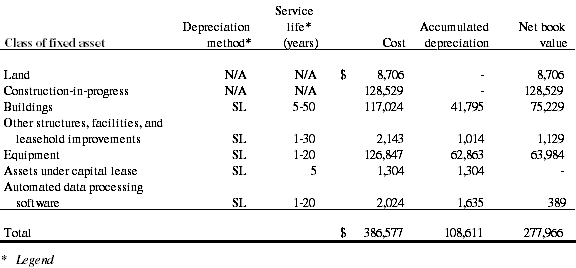
Although full charge bookkeepers combine accounting and bookkeeping services for SMEs, they do differ from accountants in some ways. The main difference is that full charge bookkeepers are not expected to work with audit and tax reports or act as financial Bookkeeping vs. Accounting advisors. For such matters, they would still seek external assistance from experts in SME and consumer goods accounting services such as controllers or certified public accountants.
Full Charge Bookkeeper Qualifications and Skills

Full charge bookkeepers are often employed by small to medium-sized what is a full charge bookkeeper businesses or may work as independent contractors. Bookkeeping deals primarily with handling the financial records of a business and preparing financial statements. This is essentially a part of accounting, and an accountant or a bookkeeper can manage it, depending on the company’s needs.
Building a Scalable Tech Stack: How to Choose the Right Tools for Growth
- The more complex, the higher the skill level needed and perhaps the more people you need handling your books.
- They will keep your books in order and ensure your business has the financial strength required to operate.
- A full charge or full service bookkeeper is someone who handles all the bookkeeping needs of a business plus accounting duties.
- They usually have more responsibilities than regular bookkeepers and are often in touch with the company’s CEO and upper management.
- Great accounting is the foundation for great financial strategy for all sized organizations.
- A controller is a person capable of generating detailed financial reports at regular intervals and supervising a typical bookkeeper in their work.
The information provided in this blog is for general informational purposes only and does not constitute financial, accounting, or legal advice. While efforts have been made to ensure the accuracy and reliability of the information presented, no guarantee is made regarding its completeness or suitability for any particular purpose. Pricing for online bookkeeping services is often based on a subscription model or flat monthly fee, recording transactions with transparent pricing and no hidden costs. Hiring an in-house bookkeeper involves several costs beyond just their salary. Additional expenses include benefits such as health insurance, retirement contributions, paid time off, and payroll taxes. Depending on the location and experience level of the bookkeeper, salaries can vary widely.

Developing Financial Strategies for Business Growth
- In summary, being a proficient full charge bookkeeper requires a combination of technical skills and personal qualities.
- Full-charge bookkeepers’ educational background and training requirements can vary depending on the business and the organization’s specific needs.
- You should consult your own legal, tax or accounting advisors before engaging in any transaction.
- Bookkeeping companiesprovide reliability, a wider range of services, and better continuity forgrowing businesses.
- The goal is to maintain financial accuracy and support business decision-making.
- They offer many different courses that will help you achieve this designation.
With a more secure, easy-to-use platform and an average Pro experience of 12 years, there’s no beating Taxfyle. Taxfyle connects you to a licensed CPA or EA who can take time-consuming bookkeeping work off your hands. Save time with automated accounting—ideal for individuals and small businesses. Certifications like the Certified Public Accountant (CPA) and Certified Bookkeeper (CB) are highly valued. Having the right qualification is important, but so are the skills you bring. As a Full-Charge Bookkeeper, you need to be detail-oriented and know Microsoft Excel well.
- Your full-charge bookkeeper can even assist in maintaining your cash position by handling accounts payable and invoice factoring, making the cash flow a lot easier to handle.
- The general ledger is the central repository of an organization’s financial data.
- Small business owners often lack the time and expertise to effectively manage their own financial records.
- This supports both compliance and strategic planning for the business’s long-term stability.
- Think of this bookkeeping service as a mix between traditional accounting and bookkeeping.
- Full-charge bookkeeping entails everything that regular bookkeeping does.

These professionals should have comprehensive knowledge of accounting principles and procedures, and may also be expected to have experience with budget preparation and financial forecasting. They ensure that all financial transactions are accurate and up-to-date, and they may also be responsible for preparing and filing taxes. Ultimately, the role of the Full Charge Bookkeeper is to accurately record all day-to-day financial transactions of our company. They must have excellent organizational skills and pay keen attention to intricate details. They have to work in close collaboration with other departments to ensure that financial information remains accurate.

How can Full Charge Bookkeepers increase their salary?
Bookkeepers provide a variety of financial services found in the table below. If you need services a bookkeeper doesn’t typically provide, you may need to hire an accountant or CPA firm instead. To excel as a full charge bookkeeper, one must possess a unique blend of educational qualifications, technical expertise, and soft skills.



